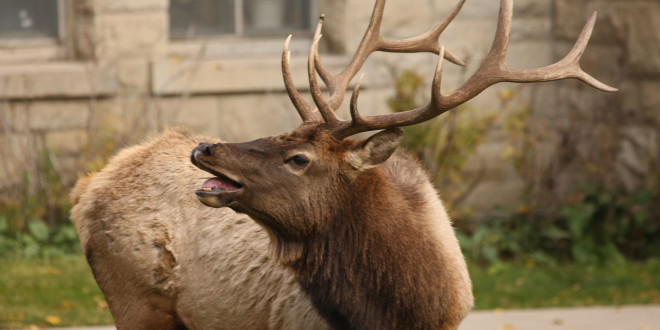According to a new study published in the Nature Communcations journal, elk are much more likely to transmit brucellosis than bison.
Indeed, according to the Bozeman Daily Chronicle, the study posits several conclusions regarding elk and brucellosis. To wit:
1. Brucellosis outbreaks in cattle correlate with increased brucellosis prevalence in elk.
2. Elk carry more diverse strains of brucellosis.
3. Bison generally carry only one strain of brucellosis.
4. Elk-specific brucellosis is much more widespread than bison-specific brucellosis.
According to Jeff Foster, a University of New Hampshire researcher and one of the study’s authors, “Elk are definitely the driver of what’s happening with brucellosis transmission in the greater Yellowstone.” From the Chronicle:
The study adds to the argument that elk are a greater transmission risk than bison, a claim often used by bison advocates pushing for federal and state officials to reform management of the iconic mammal. Its authors included biologists from Yellowstone National Park, the U.S. Department of Agriculture, U.S. Geological Survey and state wildlife agencies.
Brucellosis can cause animals to miscarry and is primarily spread through afterbirth. It originated in this region from infected cattle being brought into the area, but has since spread from wildlife to livestock. The disease is a worry for cattle ranchers because it might cause their animals to abort or harm their ability to make a profit.
The study’s results indicated that five genetically distinct groups of strains of the disease were brought to the area by cattle. Four of the five strains present were most often found in elk, while the fifth was found primarily in bison in the northern part of Yellowstone National Park.
Pauline Kamath, a researcher with the U.S. Geological Survey and one of the study’s authors, said that the four strains found in elk were more widespread, two of them spanning much of the Greater Yellowstone Ecosystem, which she said suggests, “bison are not driving the dynamics.”
She added that that didn’t mean that it was impossible for bison to transmit the disease, but that the data showed it was more probable that elk would do so.
“There’s a lot higher diversity of lineages in elk,” Kamath said. “And we’re finding the lineages associated throughout the system with elk.”
Kamath added, however, that the spread of brucellosis has been observed in places where certain conditions, which have been thought to affect brucellosis prevalence in elk (location of elk feeding grounds or contact with bison) were absent. In other words, according to Kamath, “the disease now is being transmitted within elk populations.”
The study also explores the introduction of brucellosis into the Greater Yellowstone wildlife. Indeed, the study discerned five distinct strains of brucellosis spread across elk and bison. Foster has postulated that, in all likelihood, brucellosis had been repeatedly introduced into the region by different importations of cattle, although Foster said he and his team couldn’t pinpoint where the strains originally came from—although it’s clear the brucellosis strains came from “somewhere else in the world.”
 Yellowstone Insider Your Complete Guide to America's First National Park
Yellowstone Insider Your Complete Guide to America's First National Park





